Karl Linn (1923-2005) American, born in Germany, landscape architect
Working as a landscape architect for suburban projects, Linn deplored the absence of common, accessible spaces for everybody and the absence of community life.
In 1959, he took a teaching position at the University of Pennsylvania Department of Landscape Architecture in Philadelphia.
Aspiring to give a greater social relevance to landscape architecture, he developed a Community Design-and-Build Service Program in Landscape Architecture that introduced his students to low-income inner-city neighborhoods, „exploring ways that we could serve those who could not afford professional design service“ (p. 11)
The students began to observe how residents of inner-city Philadelphia neighborhoods used open space and created improvised sitting and gathering places. Children transformed junk into imaginative play objects.
In 1960, in collaboration with Friends Neighborhood Guild and the West Poplar Civic League, they transformed a block of empty lots into „Melon Block Commons“, in one of the most neglected areas of North Philadelphia. It was supposed to become „a combination sitting area and playground, which would include a sports field and amphitheater for teenagers.“ (p. 84)
The students in Landscape architecture collaborated with students of environmental design form the Philadelphia College of Art.
After much discussion the new design met with the approval of the neighborhood. Paul Hogan volunteered to supervise the construction and he designed innovative play equipment with surplus material.
The success of Melon Commons led to other requests for community design. In 1962, they established the Neighborhood Renewal Corps (NRC) of Philadelphia „with a two-fold mission: to provide professional and technical guidance for neighborhood self-help efforts and to mobilize volunteers-professionals, community work teams, and local youth“ (p. 90)
Paul Hogan became construction coordinator of NRC, Karl Linn executive director. NRC created six neighborhood common in Philadelphia (p. 99).
In 1962, the model was brought to Washington D.C. and Karl Linn directed a Neighborhood Nonprofit Commons Program there (p. 102).
It became model for the development of a domestic peace corps, that took form in 1965 as VISTA (Volunteers in Service to America) and later as AmeriCorps (p. 21 and 91).
The successful work of the NRC encouraged the City of Philadelphia to develop a citywide Land Utilization Program. It supplied material and resources to neighborhood groups in the creation of „vest-pocket“ parks. Later on NRC was incorporated in Cities‘ program and lost its grassroots self-help-aspect. The city also failed to participate men and youth into planning and building, what contributed to the rise of vandalism. The urban renewal failed and the neighborhood deteriorated, the Commons felt into disrepair and was razed (pp. 96-97).
After 1977, Linn developed a community design-and-build service education program at the New Jersey Institute of of Technology in Newark, designing commons and open-spaces together with his students.
source: Linn, Karl. Building Commons and Community. Oakland, CA: New Village Press, 2007.
(all images Linn, Karl, op.cit)
for more details see:
In West Poplar, A Reminder Of The Limits Of Small Scale Change by Anna Goodman
posted in August 2013, up-date October 15, 2013
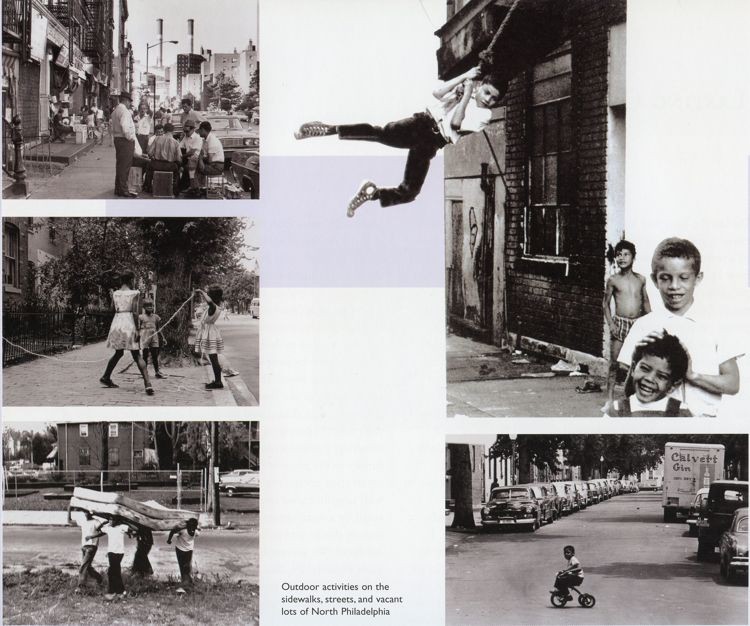
North Philadelphia, c. 1960 activities in the open space
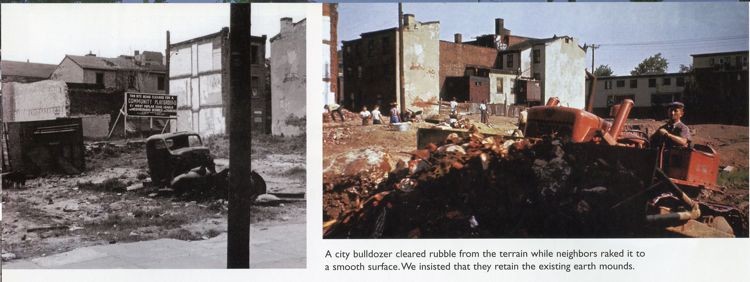
Tax-delinquent property made available for a community pg

salvaged bricks to build a sandpit
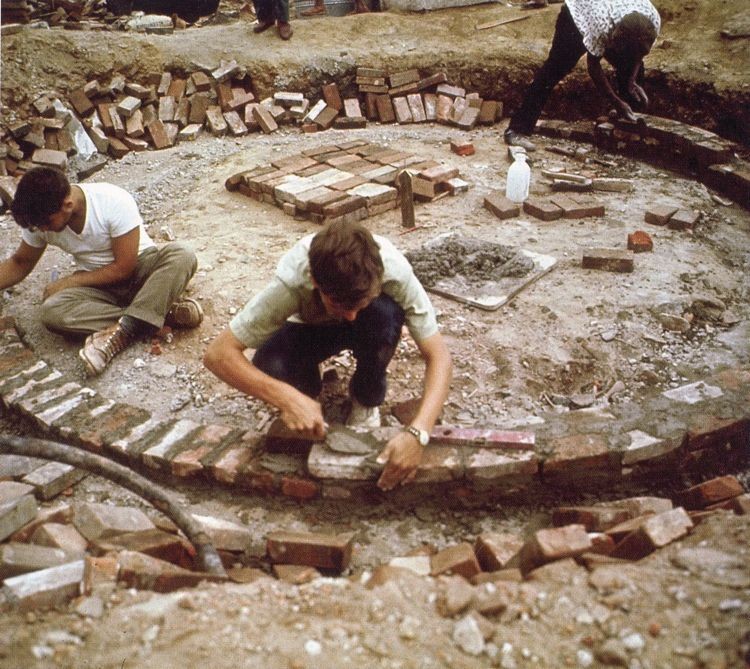
Building the sandpit
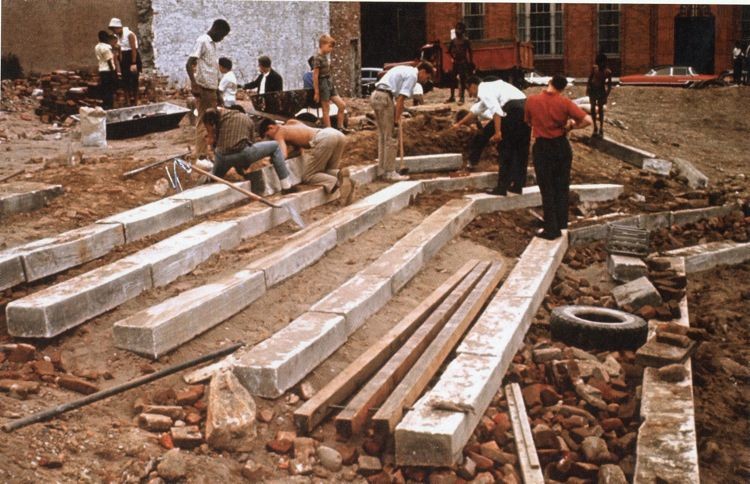
Building the steps for the amphitheater
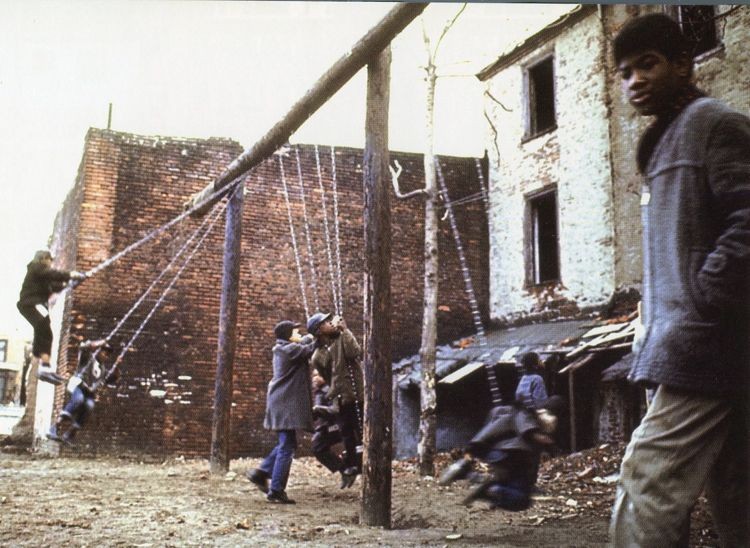
Poles from the phone company for a swing
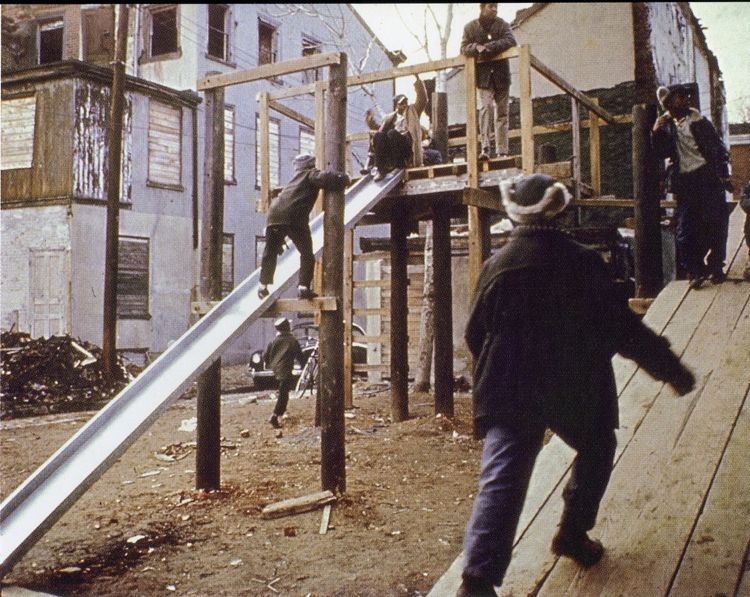
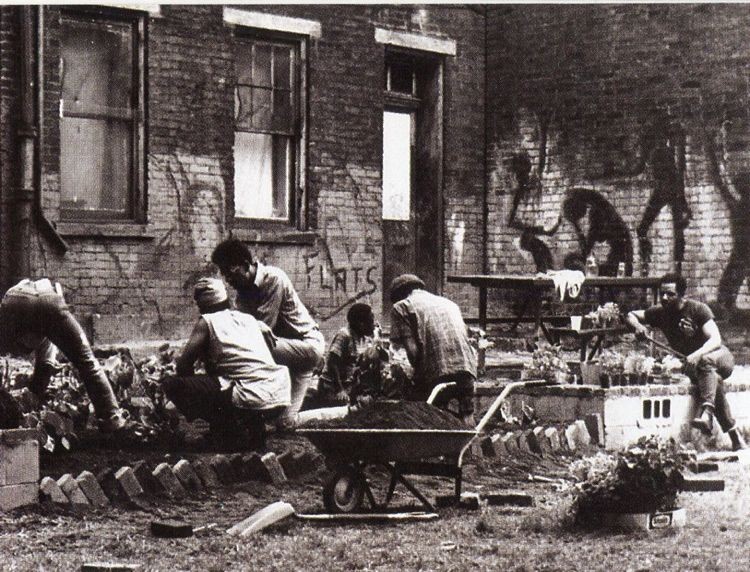

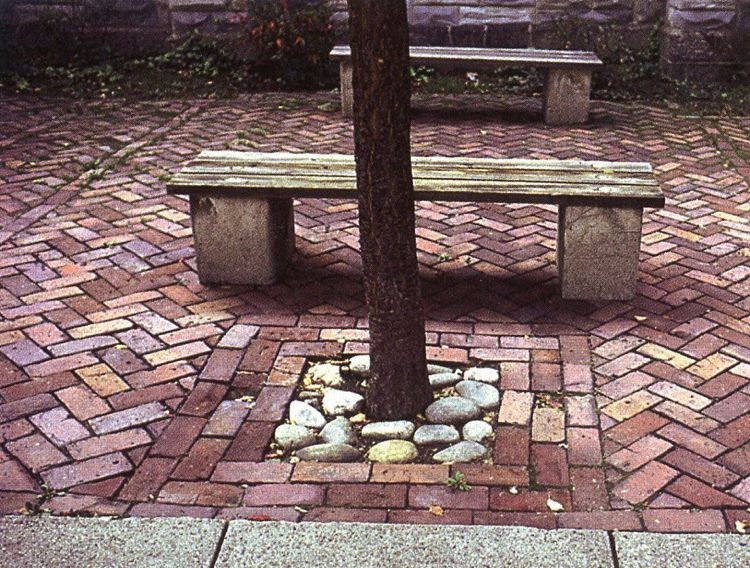
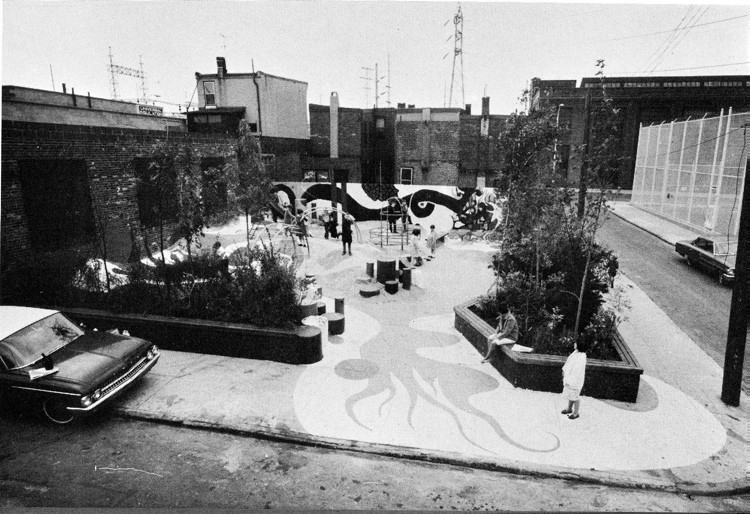
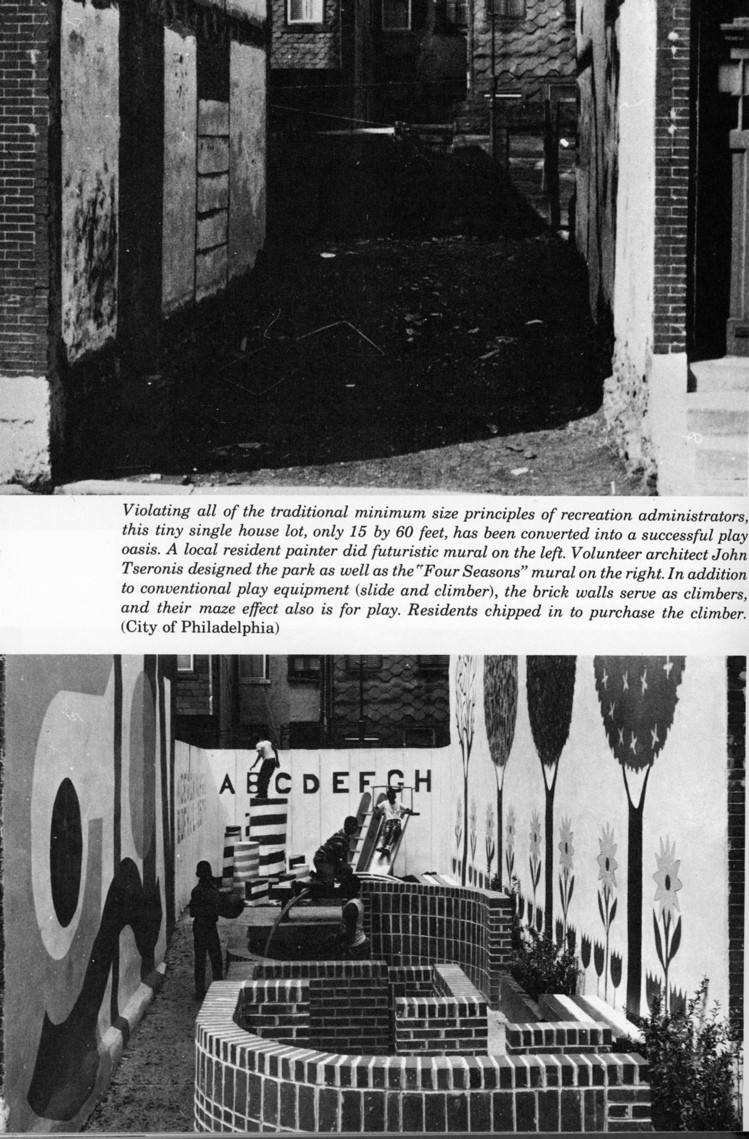
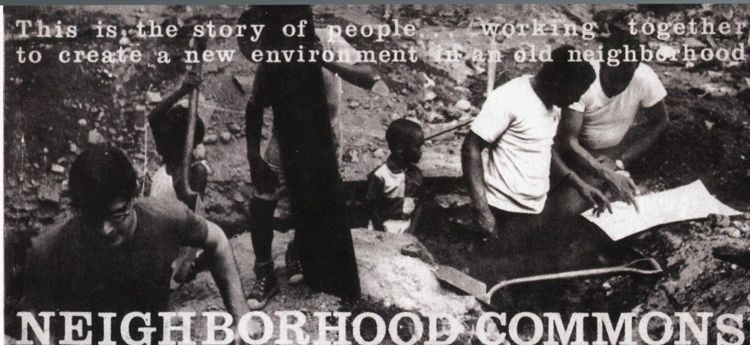
Brochure for neighborhood commons project in Harlem